Blogs
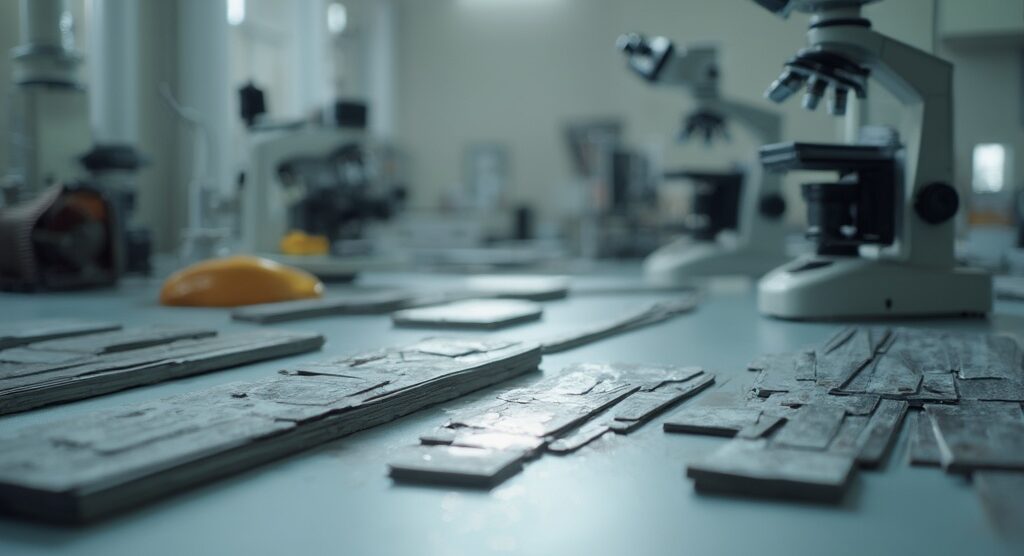
Spring Temper vs. Full Hard: A Comprehensive Comparison of Material Properties
Introduction
In the realm of material science, the choice between spring temper and full hard temper steel is pivotal for engineers and procurement managers alike. Understanding the distinct properties and applications of these two tempering processes is essential for making informed decisions that impact performance and durability.
Spring temper steel, known for its resilience and flexibility, is ideally suited for dynamic applications like automotive suspension systems, where the ability to absorb shocks is critical.
Full hard temper steel excels in applications demanding exceptional strength and rigidity, such as structural components and high-performance tools.
This article delves into the definitions, mechanical properties, applications, cost considerations, and future trends associated with these tempering processes, providing a comprehensive guide for those tasked with selecting the right material for their specific engineering challenges.
Understanding Spring Temper vs. Full Hard Temper: Definitions and Characteristics
Spring treatment refers to a specialized heat process applied to steel, specifically designed to enhance its elasticity and resilience, illustrating the differences between spring temper vs full hard. This process typically involves heating the steel followed by rapid cooling, resulting in substances that can return to their original shape after deformation. Such characteristics render spring treated substances exceptionally appropriate for challenging uses, including automotive suspension systems and other spring components, where both flexibility and strength are essential.
Research suggests that the area reduction of the steel under optimal conditions was 41.5%, emphasizing its performance capabilities.
In contrast, the comparison of spring temper vs full hard reveals that full tempered steel undergoes a more rigorous cold working process, producing substances with significantly higher strength and hardness, albeit with reduced ductility. This tempering method is ideal for applications that prioritize rigidity over flexibility, such as structural components and certain electronic housings. Full hard substances are characterized by their capacity to endure substantial stress and strain, especially in comparisons of spring temper vs full hard, making them indispensable in scenarios where durability and structural integrity are paramount.
The tempering range from 200 to 400 °C plays a crucial role in enhancing the plasticity of steel while preserving its strength characteristics. As Z.N., an expert in steel conceptualization, notes,
To optimize the strength and plastic properties of 54SiCr6 alloy steel, we can recommend conventional quenching and tempering at a temperature of 250 °C for 2 h, supplemented by pre-strain deformation of 17% by swaging with a strain rate of 120 s and a second tempering at 300 °C for 2 h.
This insight emphasizes the significance of careful temperature management in achieving the desired properties of the substance.
A pertinent case study titled ‘Impact of Tempering Temperature on 60Si2CrVNb Spring Steel’ examined how increasing tempering temperature affected dislocation density and the decomposition of martensite lath boundaries. The study found that as the temperature increased, the type of carbides changed from small-sized to large-sized, leading to a significant decrease in tensile strength while plasticity increased, transforming the fracture behavior from brittle to ductile. Moreover, high-temperature alloys are cold drawn and may be precipitation strengthened after fabrication, offering good corrosion resistance at elevated temperatures.
The unique properties of coil treated and fully strengthened steels render them suitable for diverse applications, each meeting specific engineering challenges with accuracy.
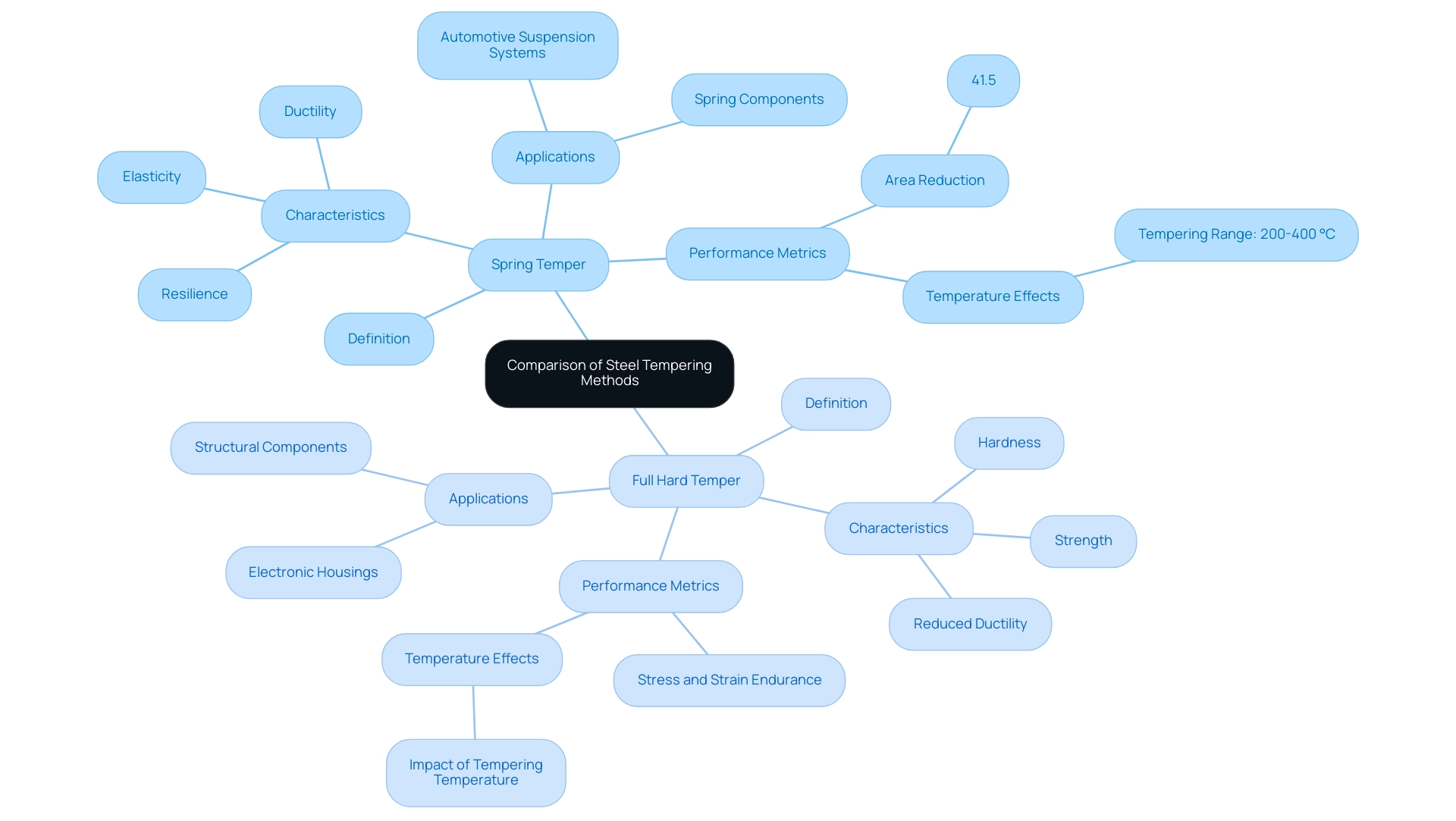
Comparative Analysis of Mechanical Properties: Spring Temper vs. Full Hard Temper
In the comparison of mechanical properties between spring temper and full hard temper materials, several critical factors must be evaluated:
Tensile Strength: Fully hardened substances typically demonstrate enhanced tensile strength compared to flexible substances. This enhancement arises from the extensive cold working process, which increases material density and overall strength. For instance, solid steel can achieve tensile strengths of up to 200,000 psi, whereas coil steel generally falls between 150,000 and 180,000 psi. Such differences highlight the significance of choosing the suitable characteristics based on the strength requirements of the application.
Yield Strength: Yield strength is another domain where fully hardened substances exceed flexible conditions. This attribute is essential in uses that require outstanding structural strength, as full cold treatment can attain yield strengths surpassing 150,000 psi. Conversely, seasonal resilience substances frequently remain near 100,000 psi. These distinctions suggest that solid substances are less likely to undergo deformation under load, making them appropriate for heavy-duty applications.
Stretching: Although temper alloys may not equal the strength of their fully tough counterparts, they excel in stretching properties. This ability allows them to stretch and revert to their original shape without permanent deformation, a property that is vital in spring applications where flexibility is essential. Conversely, full rigid substances exhibit lower elongation percentages—typically around 5-10%—highlighting their brittleness under stress.
Tempering Process: The tempering procedure for these substances typically takes place at temperatures ranging from 200 to 400 °C for 120 minutes, which significantly influences their mechanical properties. Comprehending this process is crucial for procurement managers when assessing performance of resources.
Microstructural Analysis: A case study titled ‘Microstructural Analysis of SAT and QT Processing’ reveals insights into the characteristics of martensite laths and the presence of carbides during tempering. The study found that martensite laths remained unchanged in size after both QT and SAT, with minimal carbide presence, suggesting effective microstructural stability during processing.
In summary, the choice between spring temper vs full hard materials should be directed by the particular requirements of the application. Spring characteristics provide a unique blend of flexibility and resilience, making it ideal for dynamic applications, while full hard configuration offers strength and rigidity, suitable for static load-bearing scenarios. As Z.N. notes, “To optimize the strength and plastic properties of 54SiCr6 steel for springs, we can recommend conventional quenching and tempering at a temperature of 250 °C for 2 h, supplemented by pre-strain deformation of 17% by swaging with a strain rate of 120 s and a second tempering at 300 °C for 2 h.” This expert opinion further supports the nuanced choices available to procurement managers.
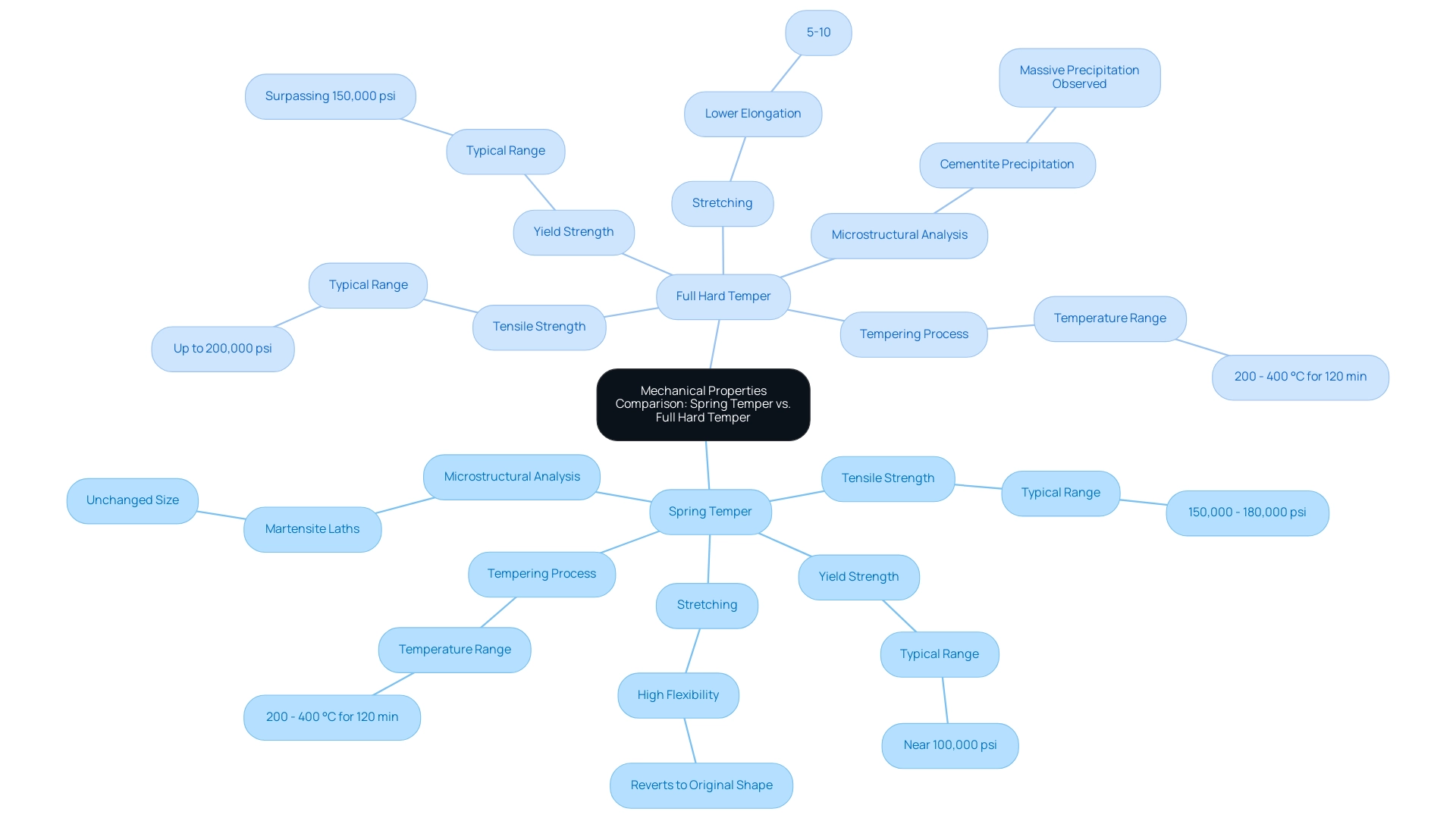
Applications of Spring Temper and Full Hard Temper Materials
In applications requiring flexibility and excellent fatigue resistance, understanding the differences between spring temper vs full hard in spring alloys is crucial. Their typical applications cover essential areas such as:
- Automotive Suspension Systems: Springs are designed to effectively absorb shocks while returning to their original shape, ensuring vehicle stability and comfort.
- Clips and Fasteners: These components require a balance of flexibility and strength, allowing them to perform reliably under varying loads.
- Industrial Machinery: Parts subjected to repetitive stress must exhibit exceptional durability without succumbing to permanent deformation, making spring treatment substances ideal for this application.
Conversely, in scenarios where high strength and rigidity are non-negotiable, the choice between spring temper vs full hard treatment substances is preferred. Their typical applications include:
- Structural Components: These substances are pivotal in construction and manufacturing, delivering the necessary strength for load-bearing applications.
- Electronic Housings: Full hard temper substances offer resilience against wear and tear, ensuring structural integrity in protective casings.
- High-Performance Tools: In applications that demand exceptional durability and resistance to deformation under load, full hard temper substances prove to be indispensable.
A comprehensive understanding of these substances aids procurement managers in making informed decisions regarding selection, especially in the context of spring temper vs full hard, tailored to specific performance requirements and operational conditions. It is crucial to consider surface quality, as it significantly affects fatigue strength, which is essential for selecting substances. For instance, Phosphor Bronze has a modulus of elasticity of 6.25 psi x 10^6, showcasing its mechanical properties in practical applications.
Additionally, the case study on High-Carbon Wire (ASTM A 230) demonstrates its cold drawn and heat treated properties, making it suitable for various applications, with a minimum tensile strength of 215 to 240. As Zbyšek Nový points out,
Remarkable differences are visible in resulting microstructures of compared samples, which were revealed by metallographic analysis and X-ray diffraction measurement,
highlighting the significance of substance properties in real-world applications.
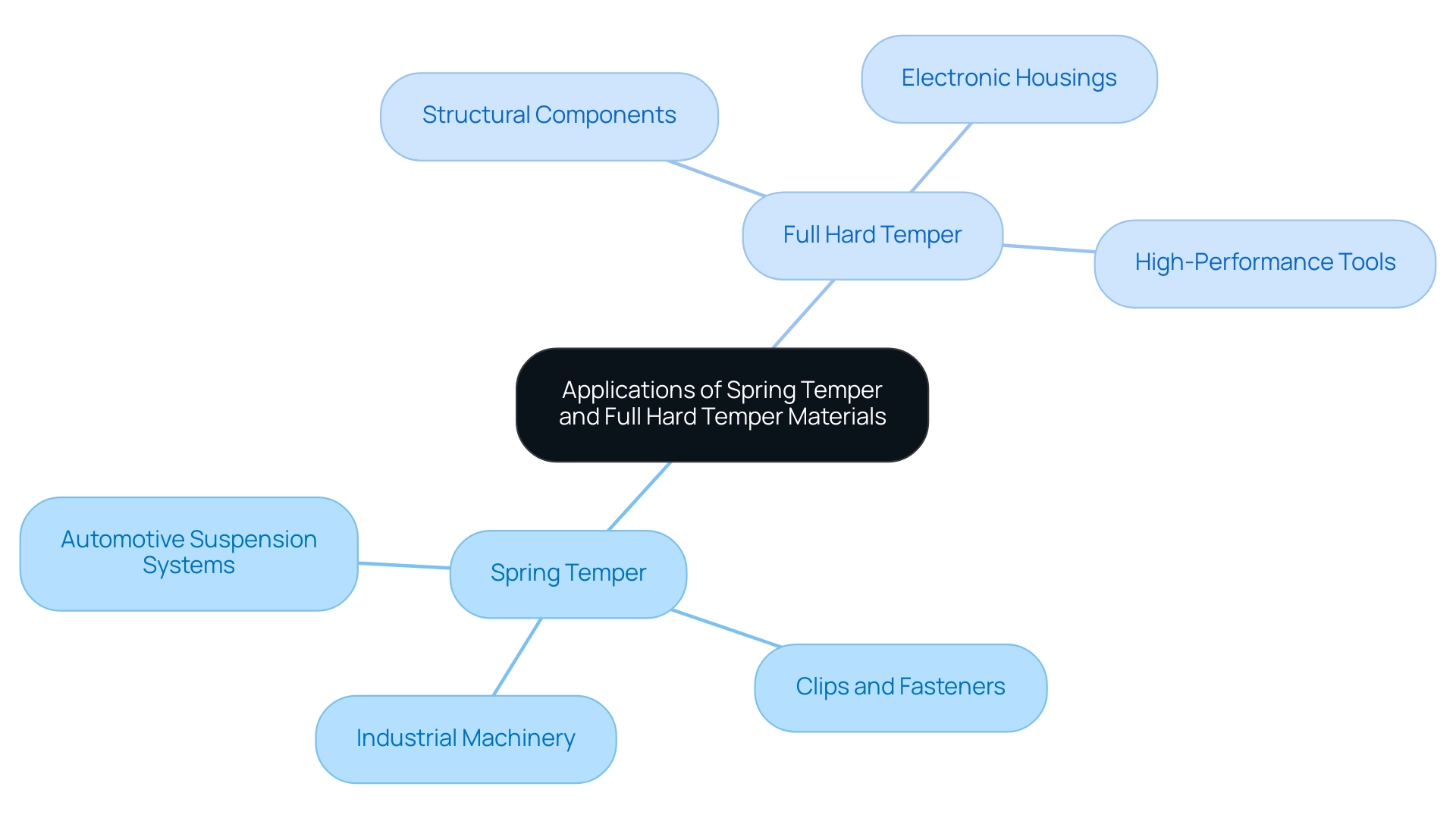
Cost Considerations: Spring Temper vs. Full Hard Temper
When assessing the expenses linked to flexible and fully rigid substances, several essential aspects must be taken into account:
Resource Expenses: Fully hardened substances generally entail greater initial costs because of the intensive processing and treatment they experience. However, the long-term advantages, such as enhanced durability and reduced maintenance requirements, can effectively balance these costs over their lifecycle.
Processing Expenses: The manufacturing procedures for coil-treated substances are typically less demanding, leading to reduced production expenses. Nonetheless, specific application demands may necessitate additional treatments that can elevate overall expenses. For instance, Ulbrich Specialty Strip Mill demonstrates how controlled rolling and annealing cycles can adjust the percent reduction in thickness—often around 0.0045 inches—to achieve desired mechanical properties, significantly influencing processing costs. This statistic highlights the precision required in processing to meet specific performance standards.
Lifecycle Costs: A comprehensive analysis of lifecycle costs is crucial for procurement managers. Although seasonal conditioning substances may seem more cost-effective initially, their performance in high-stress applications frequently results in more frequent replacements. In contrast, when comparing spring temper vs full hard temper substances, the latter, while initially pricier, tend to offer greater longevity and reliability, justifying their upfront investment. As Chris Kozka, spring engineer and Operations Manager at MW Components and secretary and treasurer of the board of the Chicago Association of Spring Manufacturers, aptly states,
Lifecycle analysis is essential for understanding the total costs over time.
In summary, while initial costs are a vital consideration, a thorough evaluation of total cost of ownership and performance durability is imperative for informed procurement decisions. This strategic approach ensures that resources chosen not only meet immediate budget constraints but also align with long-term operational efficiency.
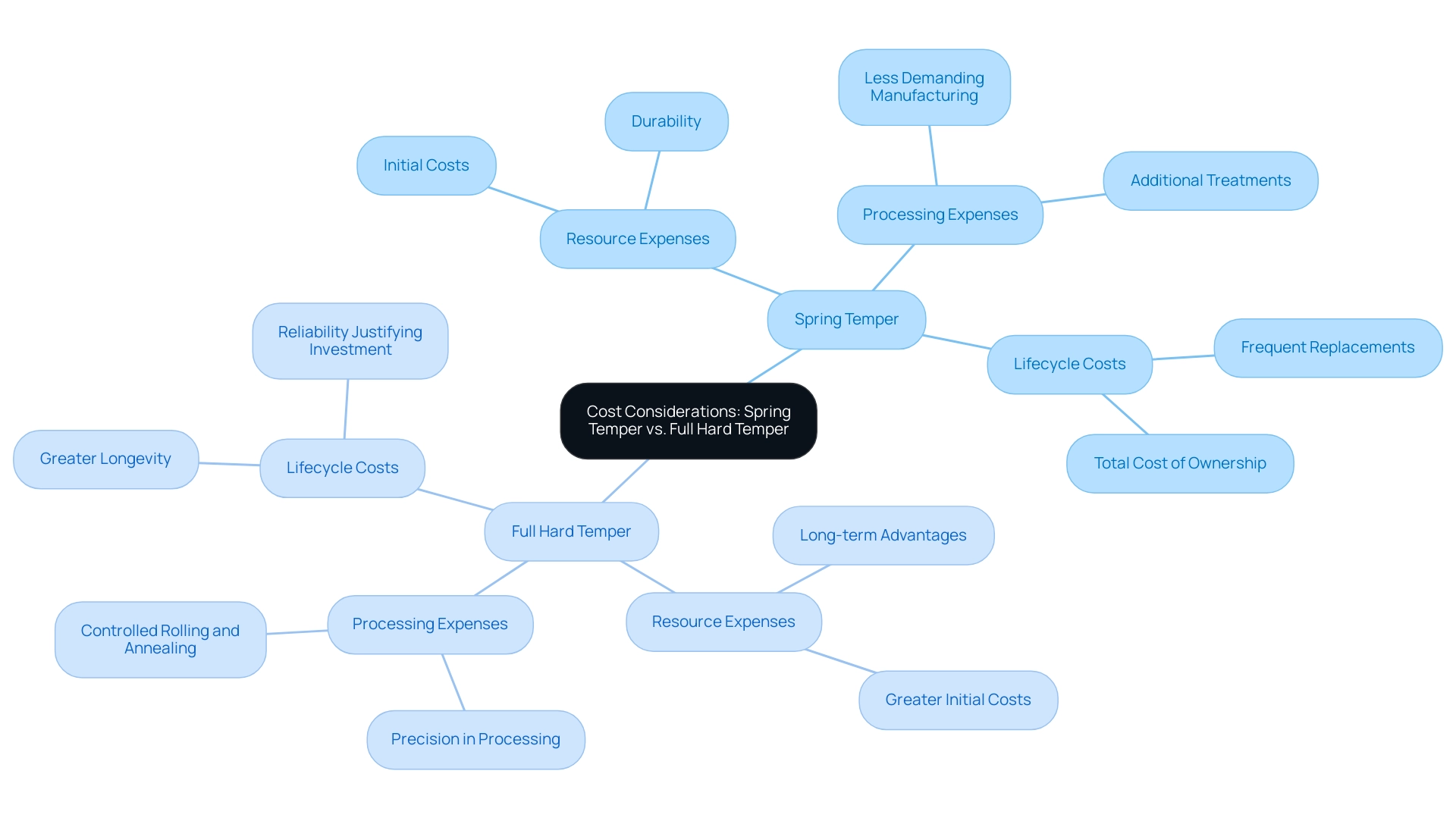
Future Trends in Tempering Processes and Material Selection
As industries continue to evolve, the processes and technologies related to selection and tempering are advancing rapidly. Key trends that procurement managers should monitor include:
Progress in Alloy Creation: The formulation of novel alloys that combine the beneficial characteristics of both resilient and fully robust substances is gaining traction. These innovations promise enhanced performance characteristics, which can be critical in applications requiring high strength and flexibility.
Sustainability in Sourcing: The push towards sustainable procurement practices is reshaping resource selection. A growing emphasis on recycled substances and environmentally friendly processing methods is influencing decisions between spring temper vs full hard temper options. This shift aligns with broader sustainability goals, which have become increasingly vital in today’s market. Recent statistics indicate that sustainable sourcing is no longer just a trend but a necessity, as companies strive to minimize their environmental impact. Significantly, a single order made to multiple specifications may undergo as many as 30 separate mechanical and microstructural tests, underscoring the importance of rigorous evaluation in sourcing.
Intelligent Substances: The emergence of intelligent substances, capable of adapting to their environments, is poised to revolutionize tempering processes. These resources enable new applications that were previously deemed unfeasible, broadening the possibilities for innovation in various industries.
Regulatory Changes: As industries grapple with increasingly stringent regulations regarding substance properties and sourcing, procurement managers must remain vigilant about compliance requirements. This awareness is essential to ensure that selection choices align with legal standards and industry best practices.
Staying informed about these trends is crucial for procurement managers navigating the complexities of sourcing in a dynamic landscape. With the Brazil Heat Treating Market driving the need for precise heat treatment processes, the diversified applications of heat treating underscore the importance of reliability and longevity in components across various sectors, including automotive and aerospace. As Brian Moore, VP of NICCA USA, Inc., stated, “The quality of research they have done for us has been excellent,” highlighting the significance of advanced material research in supporting sustainable and efficient procurement strategies.
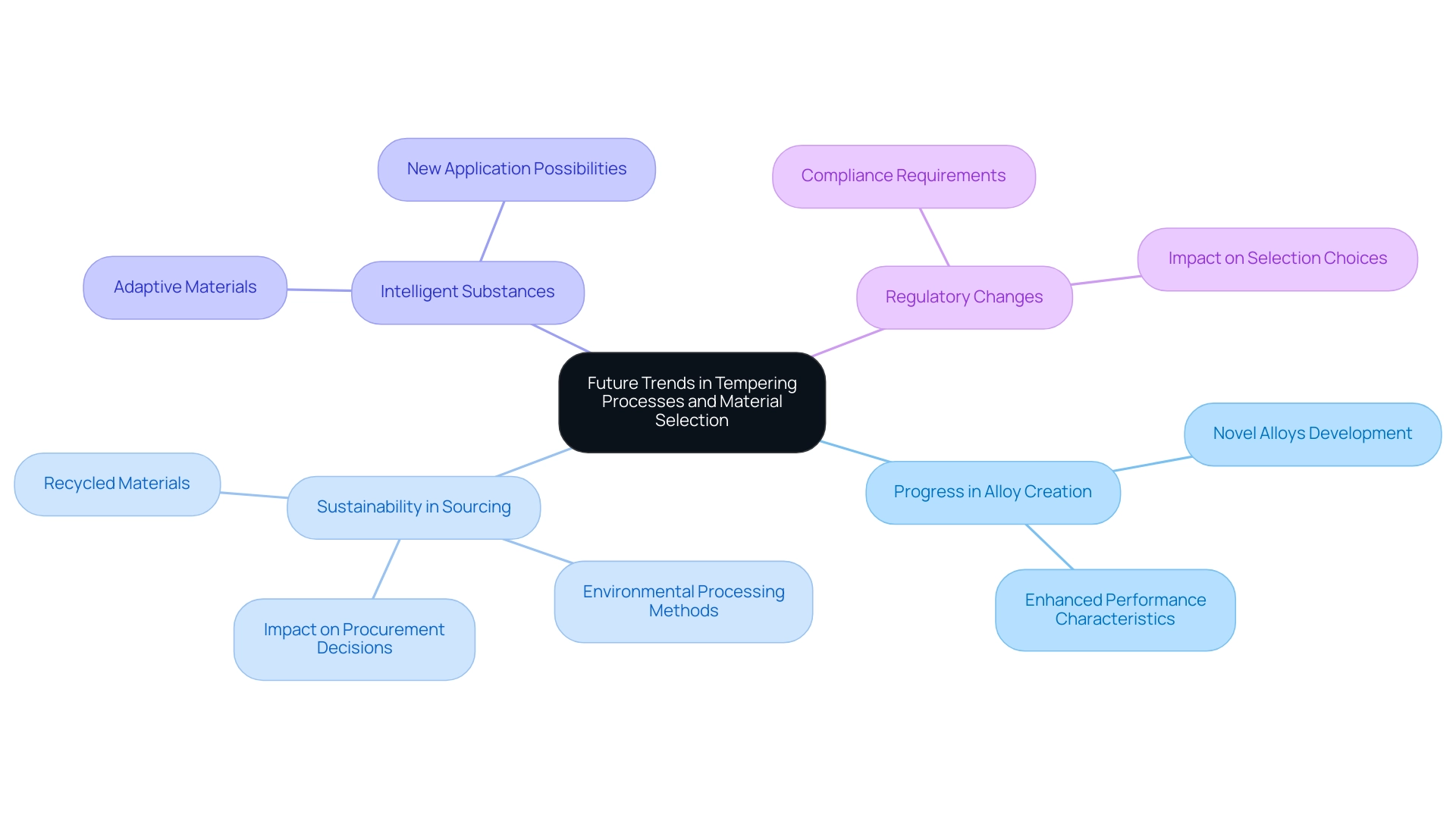
Conclusion
The distinction between spring temper and full hard temper steel is fundamental for engineers and procurement managers tasked with selecting the appropriate materials for specific applications.
Spring temper steel offers exceptional flexibility and resilience, making it ideal for dynamic environments such as automotive suspension systems and industrial machinery. In contrast, full hard temper steel delivers unmatched strength and rigidity, suited for structural components and high-performance tools that require durability and resistance to deformation.
Understanding the mechanical properties of these materials, including tensile strength, yield strength, and elongation, is crucial in making informed decisions. While full hard temper steel typically outperforms in terms of strength, spring temper steel’s ability to stretch and return to its original form is vital for applications where flexibility is paramount. Moreover, cost considerations, including initial material costs and lifecycle expenses, highlight the importance of a comprehensive evaluation to ensure the chosen material aligns with both immediate budgetary constraints and long-term operational efficiency.
Looking ahead, trends such as advancements in alloy development, a focus on sustainability, and the emergence of smart materials will influence future material selection processes. As industries continue to evolve, procurement managers must stay informed about these developments to navigate the complexities of sourcing materials that not only meet performance requirements but also align with broader sustainability goals.
In conclusion, the strategic choice between spring temper and full hard temper steel is essential for optimizing performance in various applications. By thoroughly understanding the unique properties and applications of each temper, procurement managers can ensure that their material selections effectively address their engineering challenges while considering cost and future trends.




